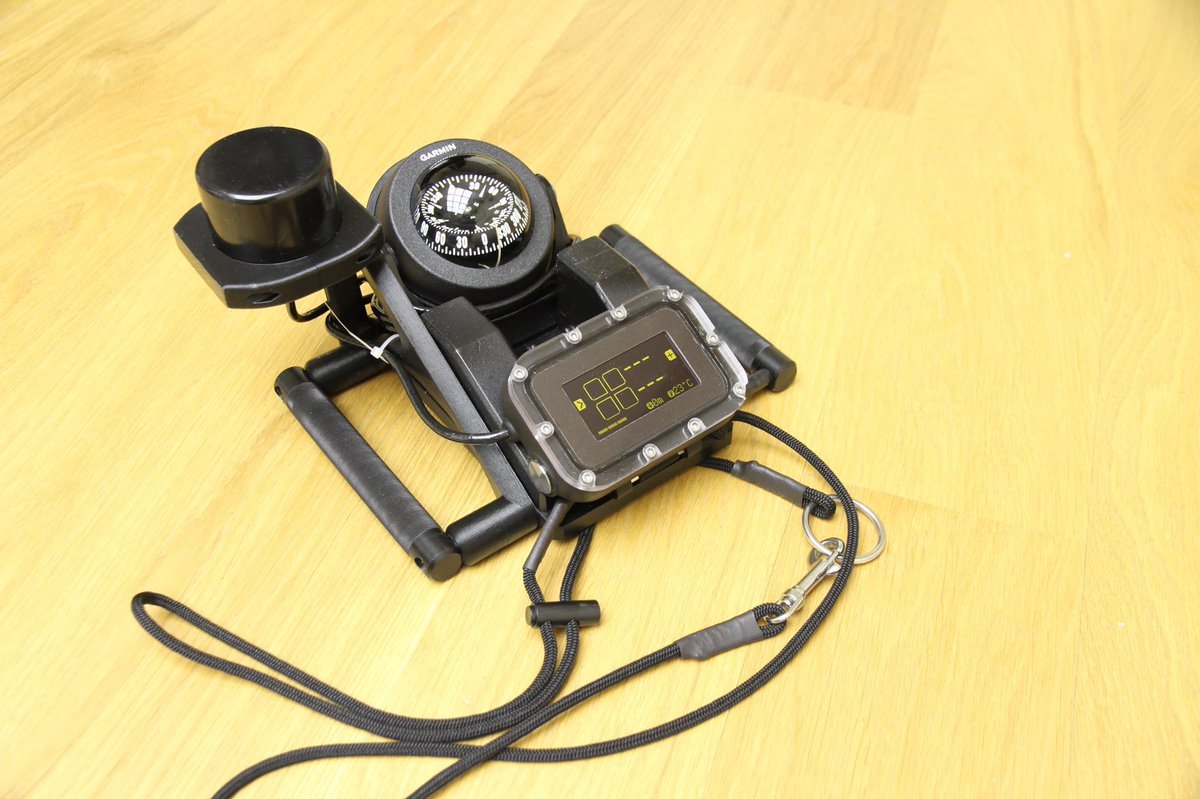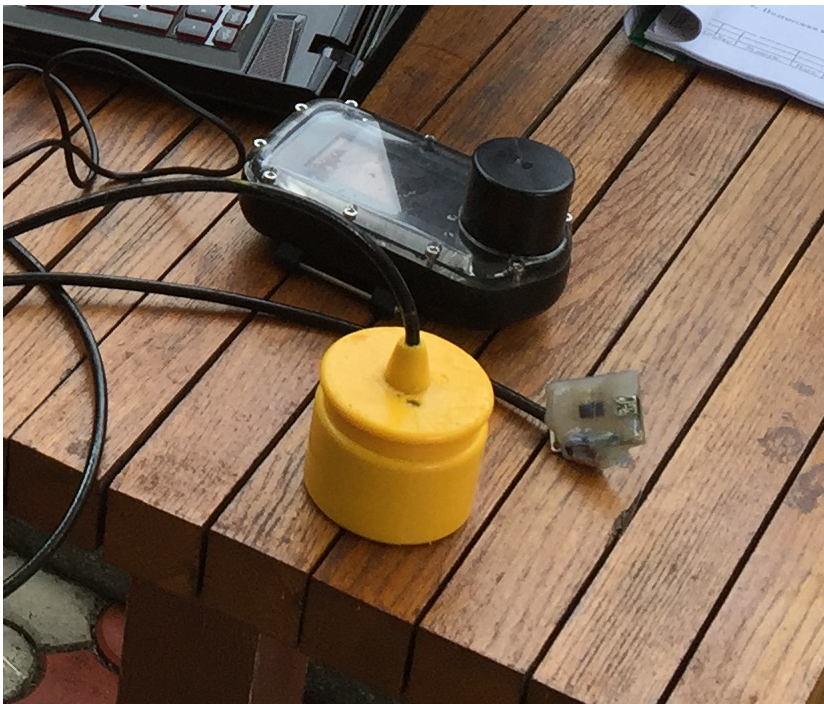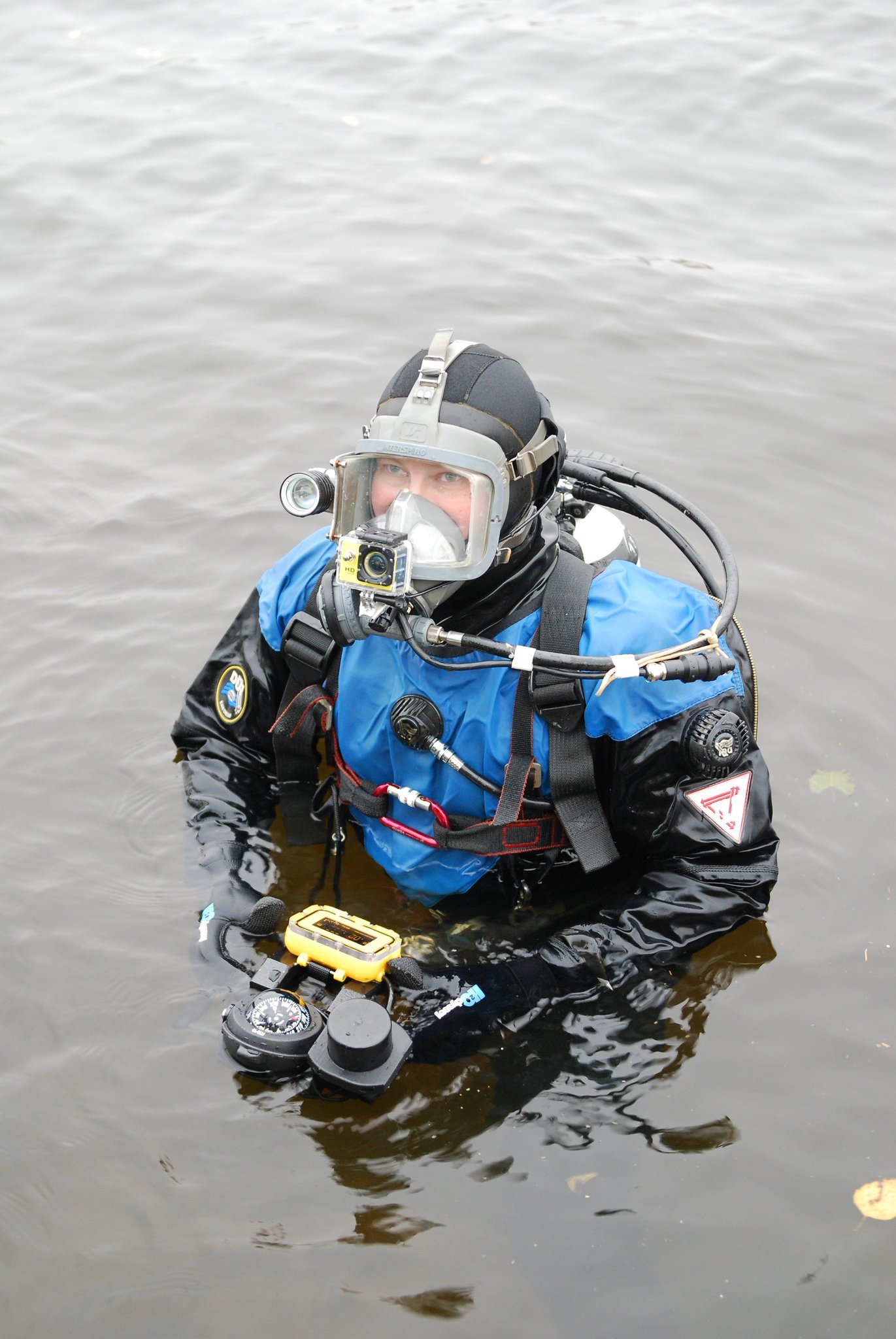Underwater GPS from scratch per year
“So while you are sitting here, there, in Alaska, the
ions of atoms merge and form plasmoids!” (C) Unknown
In the past few years, publications, press releases, and even start-ups on navigation under water have been appearing continually. The fact is that the problem of underwater navigation has not yet been solved as conveniently as over water: GNSS signals do not penetrate into the water, and existing inertial systems are either not accurate enough or too expensive.
I want to tell how the three of us and in one year made an underwater GPS from scratch.
In general, the need has long been ripe for a simple underwater positioning system. No, I do not want to say that underwater positioning systems do not exist, on the contrary, they are just a dime a dozen: from the super serious HiPAP (Norwegian company Kongsberg) and GAPS (French IXBLUE), a whole line of systems from the German EvoLogics.de, the American Teledyne, English Sonardyne, to the relatively simple Tritech MicronNAV, Israeli UDI (one of the very few systems that divers can use). So you can imagine, one of the simplest MicronNAV positioning systems costs an average of 18,000 euros, and is designed to work with consumer goods, at distances of only up to 500 meters. And the Israeli UDI - which was originally designed only for divers,
The reader probably already noticed that there is not a single Russian manufacturer on the list. That's right, it is not on the list due to the fact that currently no Russian company produces underwater navigation devices that can be purchased and successfully used - and this despite the fact that the navigation task is very relevant for the vast majority of diving operations!
The diver is not easy underwater - the environment is unfriendly, the amount of air in the cylinders is limited, very often poor visibility, no further than outstretched arms, and even the water column presses. Any diver will tell you that the depth of mistakes doesn’t forgive, and they truly say that it’s easier to launch people into space than to send six thousand meters of depth on an underwater vehicle.
Take a look at the list производителей подводных аппаратов, которых больше, чем известных мне автомобильных брендов. Можно, однако, порадоваться, что в этом списке есть один отечественный производитель, пусть и выпускающий только малые аппараты осмотрового класса.
Но даже опуская на глубину подводный аппарат – мы не решаем основной проблемы:
Можно получить с аппарата видео в реальном времени и в HD качестве, но почти всегда очень непросто понять, где конкретно находится аппарат под водой, где находится всё то, что вы в роскошном качестве увидели на мониторе. И это мы не говорим о том, что дорогостоящий аппарат, ввиду отсутствия понимания, где он находится, можно разбить о судно при всплытии.
Почему же навигационная задача под водой столь непросто решается?
We exclude radio waves, light in real muddy ponds does not spread far - sound remains.
Those interested can read the wonderful article , which well describes the main problems of sound propagation in water.
Many different companies, individual developers and other creative teams are trying to solve this problem. Some of the proposed solutions obviously have nothing to do with reality, for example, the same Navimate - they promise already since 2009, so far nothing but renders. Specialists have already danced on their bones, but at various diving forums this “startup” pops up every now and then.
There is another interesting concept.- Inertial navigation system, we are closely following them, but so far the case has not moved beyond the prototype printed on a 3D printer lying on the table. And a couple of clones of NaviMate - Concept No. 1 and Concept No. 2 .
Physics is one for everyone, and it is possible to describe in great detail why today it is impossible to make a system with those characteristics and in the form factor that respected “startupers” declare, but this is not the case now.
There are many more systems with a GPS antenna on a cable with a float, for example - one and one but let's be honest - this is not “underwater navigation”, and walking underwater with a float on a rope is far from always possible.
The theme of underwater GPS does not leave indifferent the guys fromDARPA - but so far, except for beautiful pictures, they show us nothing.
"Well? "- the reader stamps in the hearts of the water surface with his foot. Apparently this task is akin to quantum teleportation of a person or (well, at least!) Sending the same person to Mars by conservative means (on a large rocket) .:
And generally speaking

What if...?

I want to whisper to add how ingenious Etush in “Ivan Vasilievich is changing his profession”: “I am not a drinker!”
Reader, understand me correctly - I’m not looking for advertising, underwater navigation is a very specific thing, and everyone who needs it I already know.
I just want you to be glad that we did it, this is a domestic development - from beginning to end.
I want you not to think about "rusty missiles", and that if you try hard, you can do a lot.
And now I’ll sketch in large strokes how all this happened.
So, briefly about what types of navigation systems are, about their pros and cons:
Systems are divided according to the so-called. relative length of the measuring base. The length is estimated relative to the size of the trajectory of the positioned object.
-Ultrashort-base(UKB, USBL - ultrashort base-line). In essence, this is positioning based on determining the direction to the signal source. A system generally consists of a direction finding antenna and a transponder beacon. The antenna sends a request signal, the beacon responds to it, according to the estimated propagation time of the signal, the slant range is calculated, the antenna determines the direction of arrival of the signal — vertical and horizontal angles, and thus determines the location of the responder beacon relative to itself. Among the disadvantages of such systems are strict requirements for the geometry of the antenna, the need to take into account its position in the submerged state - the influence of pitching, if the antenna is lowered on the cable - it turns, the antenna tilts, it requires a magnetic compass to be installed on it. Plus, the lighthouse must have good energy, in case of using several beacons - their survey is carried out sequentially. This is not very similar to GPS, but our ears work on these principles.
- Short base(KB, SBL - short base-line). If the elements of the direction-finding antenna are spread away from each other, for example, hanged on the sides of the vessel, a short-base system will be obtained. Since the distances between the converters are considerable, one can already carefully try to directly solve the problem of determining the location of the signal source. In fact, the elements of such a spaced antenna can be a signal source, and reception can be carried out at the beacon, in which case the coordinate will be calculated on the positioned object. This is already very close in essence to GPS - with such an organization of the system, beacons can be completely acoustically passive, now they become navigation receivers, like GPS / GLONASS receivers.
- Dlinnobazisnaya (DB, LBL - Long base-line) . In fact, this is the same short-base system, but its elements are located independently from each other at the bottom, or are installed on floating platforms. In this case, everything seems to be quite good - the dimensions of the measuring base are sufficient, the base stations themselves (elements of the navigation measuring base) are functionally similar to GPS / GLONASS satellites.
The disadvantages of such a system are the inconvenience of its deployment, and in the case of the bottom base - first you need to accurately determine the coordinates of these bottom stations - and here we are, where we started.
But, as one of the sailors' acquaintances said: “Do it well - it will turn out badly.”
If we are going to make underwater GPS, then let it be as similar as possible to GPS, you know, millions of cars and people with smartphones walk on the ground, in most cases they get to where they need and no one measures the distance to GNSS satellites using the request-response method , the satellites are also just busy with radiation without any fuss with the reception of the return signal, and everything is fine in general - everyone is happy.
What is the required functionality of such a system? It is very unsophisticated - you need to know where you are relative to any predetermined landmarks - points of interest (POIs), you want to have your own track, recorded in submerged state for post-factum debriefing, it would be nice to see something interesting at the bottom - mark the point to which later it would be possible to return. What is so fundamental that this is possible? Only - to know their absolute geographical coordinates in submerged position. Knowing this, all other tasks become trivial.
At the very early stage, when our system was in the form of “drafts on napkins,” we settled on the LBL scheme.
Our system requires exactly four “satellites” - a buoy, equipped with GPS / GLONASS receivers to determine their own coordinates and further transmit these coordinates to an unlimited number of navigation receivers. At the same time, an unlimited (like in adults! Like in real GPS!) Number of receivers will be able to determine their own location from the received data - but not relative to buoys, like in SBL, but in geographical coordinates!
In short, the system consists of four floating GNSS signal repeater buoys and any number of underwater navigation receivers;
The navigation receiver in our system is acoustically passive - it never emits (this is the only way to ensure the operation of an unlimited number of acoustic receivers in one area), the receiver “listens” to the buoys, receives their messages and solves the problem of finding its own position based on the geographic coordinates of the buoys. We add depth calculation to geographical coordinates - and voila, we know exactly where our navigator is in the water!
The system was first introduced at IMDS-2015 (International Naval Salon), traditionally held at LENEXPO in St. Petersburg. The system aroused great interest among the "underwater" public; After that there were still numerous trips to various reservoirs of our vast homeland. In each trip, we collected factual material, on the basis of which we improved both the “iron” component of the system and the algorithms.
Now let's see how it all works.
Diver navigation receiver
The navigation receiver, working with geographic coordinates, displays the estimated azimuth and distance to the selected destination for the diver — given before the dive, already saved during the dive, or to one of the four relay buoys.
Accordingly, we must equip the receiver with a compass so that the diver can move along the azimuth indicated by the device. However, fellow divers criticized us for using the electronic compass - the device turned out to be very capricious, requiring frequent calibration and inaccurate. As a result, in the first version of the device, we refused the electronic compass; professional divers always dive with a mechanical compass, the problem of movement in azimuth was solved.
The picture shows one of the options - the navigation receiver is mounted on a diving panel with a mechanical compass:

But here is the navigation receiver of the first version:

It didn’t work very much - there were problems with the reliability of reception (a small antenna installed on the device itself), as a result, quickly enough version 2 appeared, which is shown in the first figure.
Initially, there were two different solutions: for robots (TNPA / ANPA) and for humans. An option for the robot is a cylinder on a cable, filled in polyurethane. All the electronics of the navigator are located inside the receiving antenna; for this layout solution we received our first patent. And with him, everything was just fine - this option worked as planned. Here it is, yellowish, in the photo:

With the diving option, there were always problems - less sensitivity, more errors, loss of reception. We conducted a bunch of checks, simulations, experiments and came to the conclusion that location affects this state of affairs to a greater extent - the small piezo ring of the diving receiver (the black cylinder on the navigator’s body) is often obscured by the diver.
In the end, they decided to cross two devices - the robot navigator is engaged in the reception, since he does it so well. We take out this receiver either on the balloon (on the diver’s back), or on the shoulder, or we fix it on the diving panel. All that remains of the old navigator is the "display" - the interface part in the form of a separate unit, which can be mounted both on the panel and on the arm. Based on the results of actual operation, the interface was also rewritten - extra details were removed, important parameters were made larger.
This is how it looks in the hands of a real diver:

Navigation buoys
Now let's talk about navigation buoys that provide all this underwater splendor. As mentioned above, a navigation buoy is a thing that receives a GNSS signal and relays it into the water.
The first version of the buoys looked like this:
The practice of using revealed a number of annoying shortcomings, the most unpleasant of which was associated with frequent "flooding" of the buoy.
Leakage is interrupted testing and work, dissatisfied users, that’s all.
It quickly became clear that the buoys flowed trivially through Chinese GNSS antennas (such a “flasher” on the lid). The antenna was screwed into the lid of the buoy, but flowed not through the place of contact (we did not spare sealant and rubber), but through its own housing. Having spat on everything, we decided to make our antenna and hide it under the buoy cover, eliminating unnecessary leaks from the structure. In the figure below, there’s just a new set of buoys in a native case specially made for them:

Here is this bulge on the lid - there now lives the GNSS receiver board. A second light was added to the heap and they were placed both so that they shone almost in a horizontal plane — the previous version of the arrangement was not very visible from the water.
But the most important changes concerned internal software. I will show the entire evolution of the quality of navigation data in the series of the following figures.
Here are the results of one of the first serious trials on the White Sea in 2015. Buoys and receiver "in static", the real White Sea, difficult conditions - shallow water and strong multipath:
Another screenshot from our technological software. The same White Sea. We go on oars, lowering the receiver on the cable.

And here is April 2016, the Volgograd reservoir. The track is unloaded from the diving receiver, then the first version. The average bounce (track width) is about 1.5-2 meters:

From the very beginning we have an open protocol for pairing and uploading tracks in KML, GPX and CSV. Diving devices are wirelessly charged and paired with a PC via Bluetooth. Once uploaded, the track can be imported into GoogleEarth or SAS.Planet. Subsequently, we emulated a GNSS receiver, so that now we can connect the robot’s navigation receiver (it’s called RedNODE) directly to the cSAS.Planet PC and use all its amenities — offline maps, the ability to select any substrate, draw a track in real time, etc. .P.
And here is the diver who helped us in April 2016 at the Volgograd reservoir:
Pay attention, the navigator (yellow) is fixed on his hand, and the second (black) hangs on the cylinder. The track from the reservoir, shown above, was unloaded from the black navigator, the one that was installed on the tank. The track from the wrist navigator turned out to be very bad, with a lot of passes. It was after this dive that we finally decided to take out the acoustic receiver so that it would not be shielded by the diver.
October 2016, the mouth of the Pichuga River, Volgograd Reservoir. Simultaneous recording of a track from two devices RedNODE (robot navigator) and RedNAV (diver navigator).

We see two tracks recorded from the same boat using two devices - RedNODE (robot navigator) and RedNAV (diver navigator; both fell on a rope from the side of a rubber boat). The operation of devices outside the navigation base (outside the shape of buoys) was tested. The track RedNODE (purple) was written directly using SAS.Planet, the diving receiver track was unloaded post-factum and overlaid. At Waypoint 1, the diving receiver was pulled out of the water, and we kept the RedNODE in the water all the way to the shore, as evidenced by the track itself. And there’s even a photo:

(Painting “Crucian Walking.” Oil, canvas. Pichuga River, October 2016)
At that moment, we were very surprised that the device was working right on the shore - these are extremely difficult hydrological conditions, plus work outside the navigation base.
And here are the results obtained on the latest (today) version of the firmware and hardware. Track diver, November 2016, the channel to them. Moscow in the vicinity of Art. Metro "Water Stadium" (Moscow):

I want to pay attention to how much easier the work of a diver. The diver was given the following task: to dive, go out to one of the buoys, go out from it to another buoy and go back - on the navigator.
Immersion conditions - muddy water, visibility no more than 1 meter. The diver followed exactly the same trail - the maximum deviation from his own trajectory was no more than 1.5 meters! The distance between buoys 2 and 4 is about 210 meters. That is, a person did not spend time and energy searching — he simply went where the device pointed him.
PS Who did what:
- One person designed and parted all the boards and drew all the mechanics, plus thought out the assembly technology, he soldered everything (for reference, in one navigator - more than nine hundred solder points!) And assembled;
- Another person came up with a model and wrote all the firmware (and also helped to assemble);
- Another person led all this, simultaneously directing the research, which came to a standstill and wheeled the immense in search of places and people for tests, and also toured with a demo kit and draped over the thresholds of various funds.
PPS
That which is conceivable is feasible. (C) Mao
